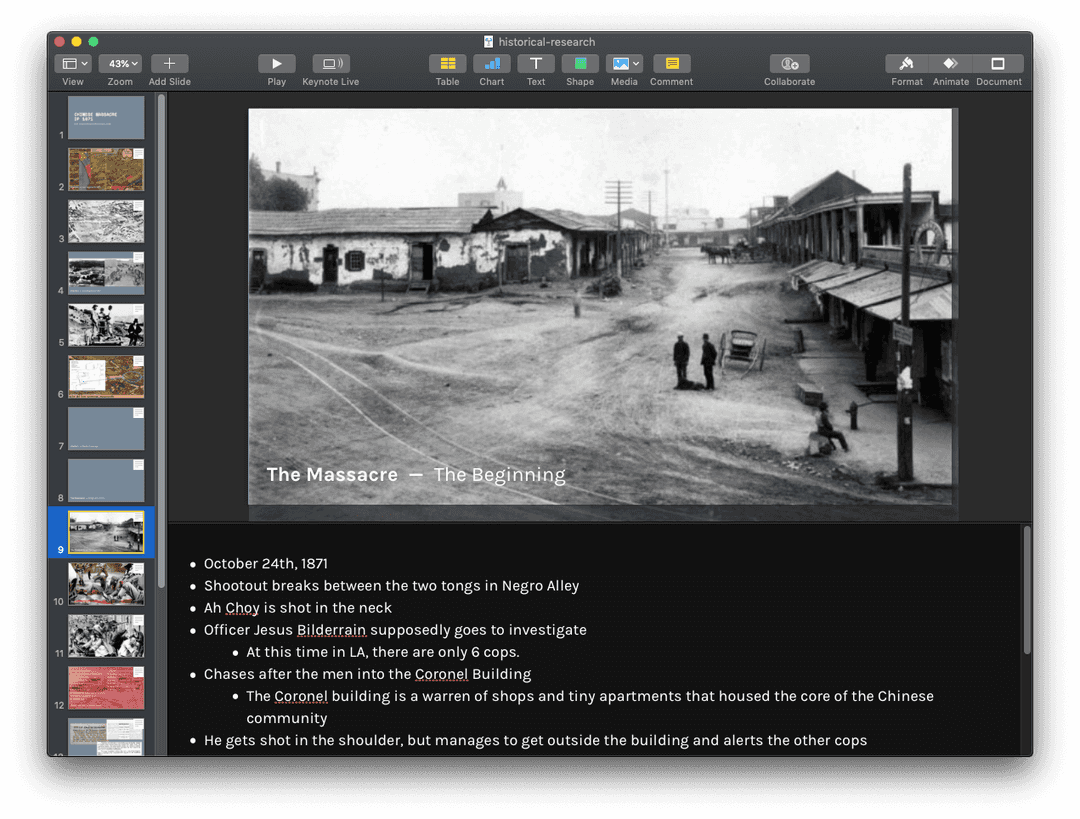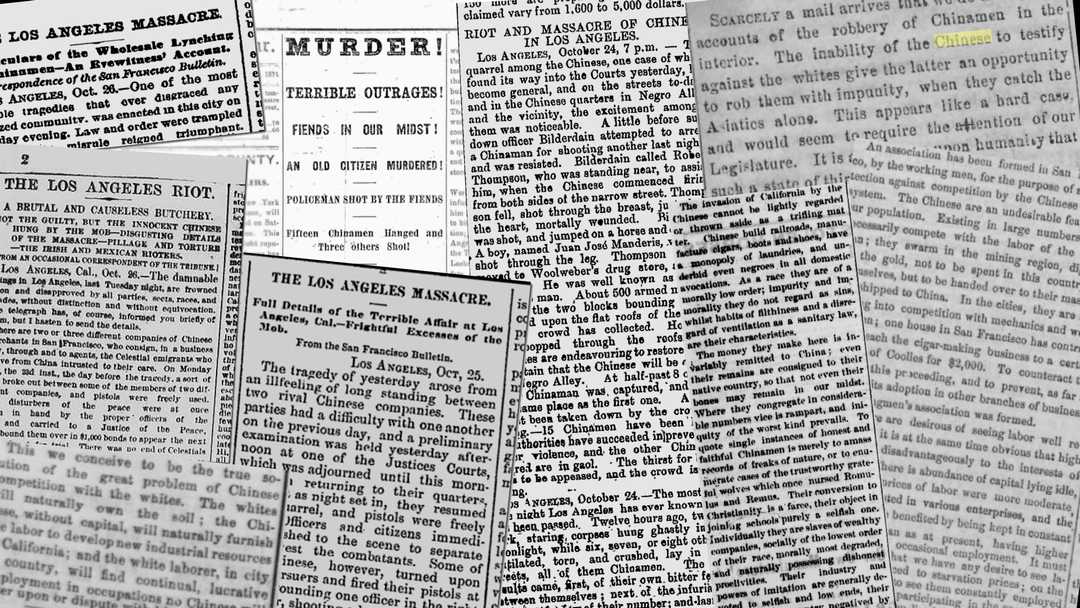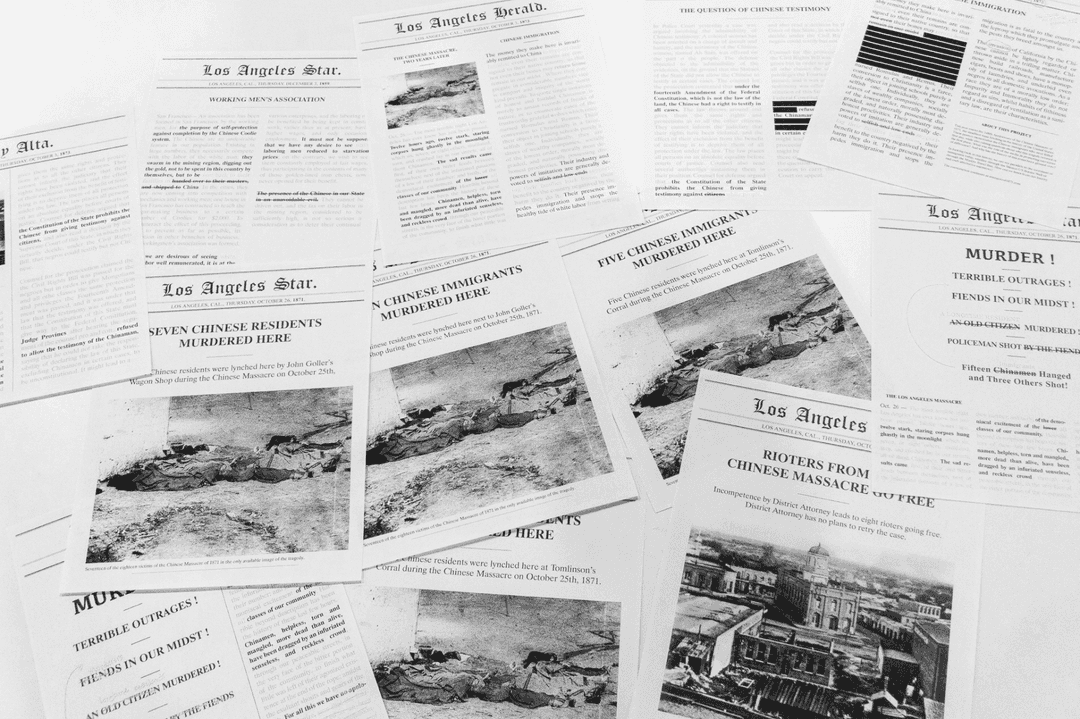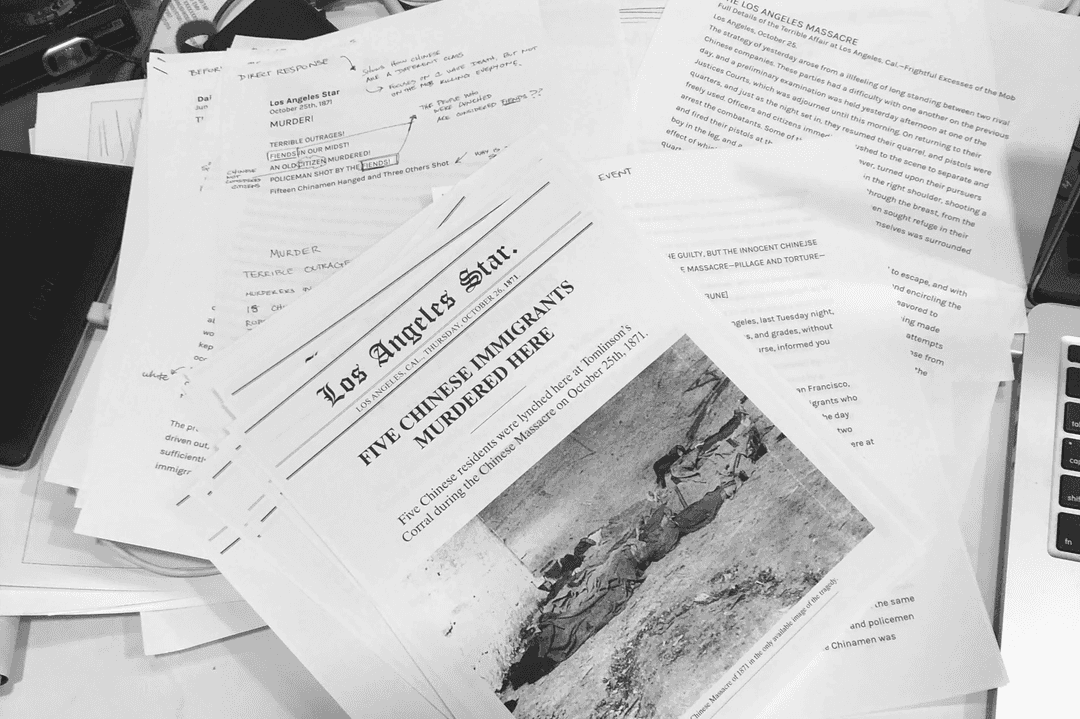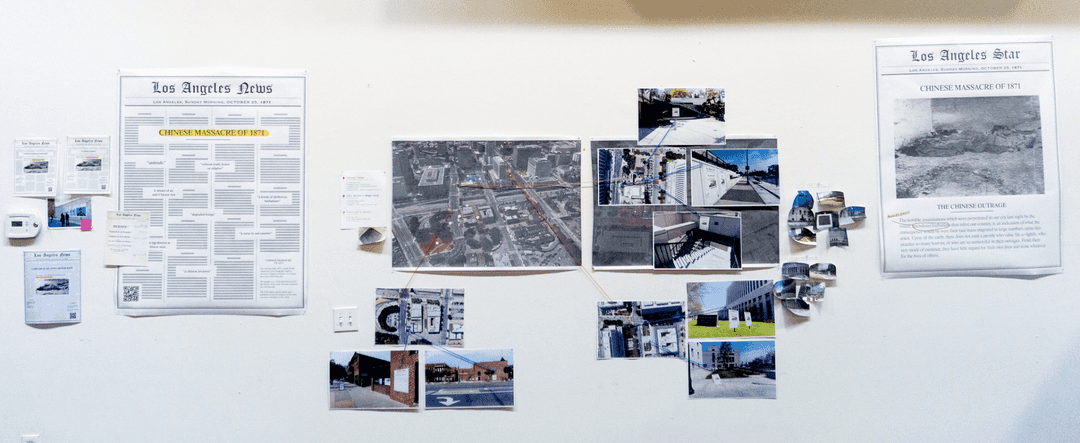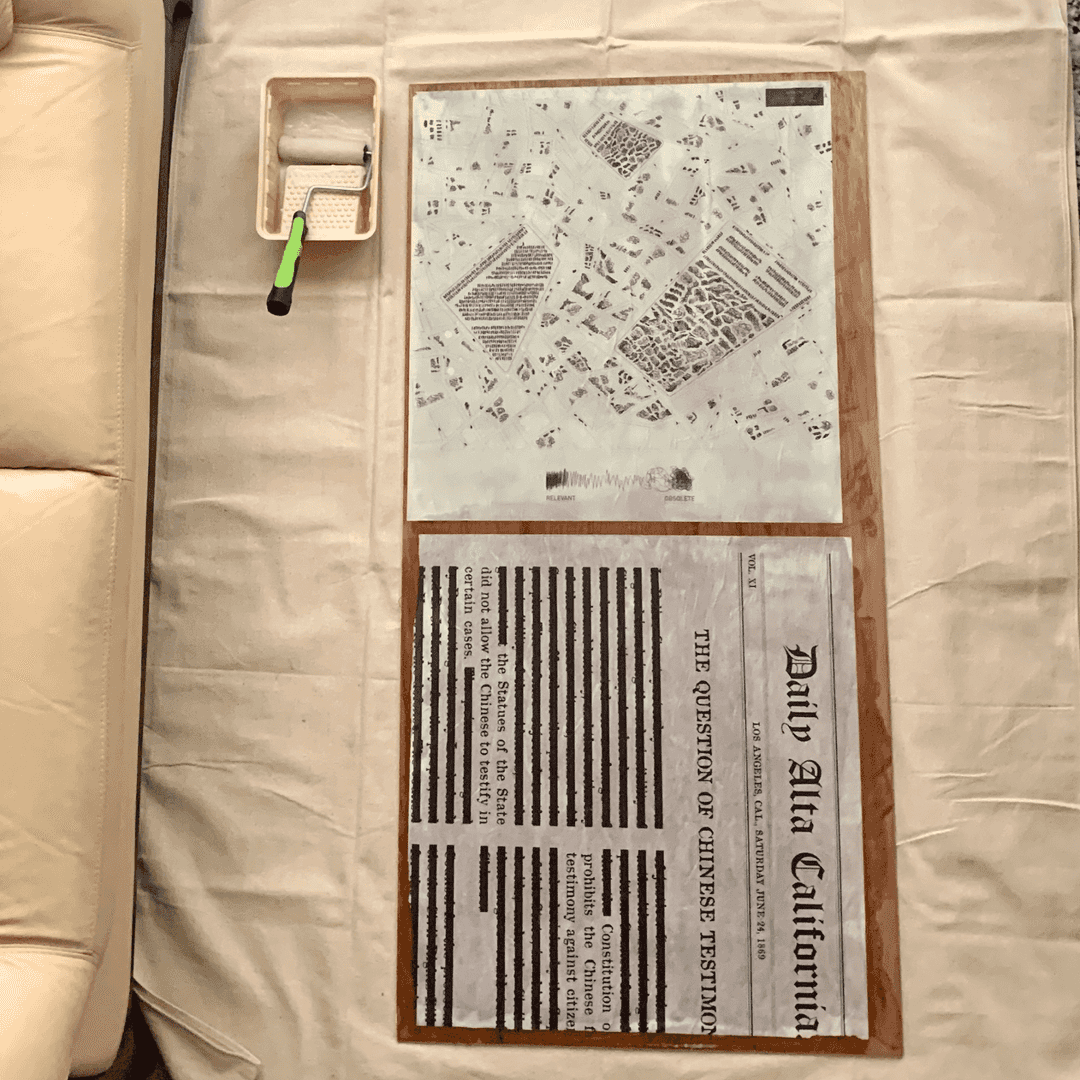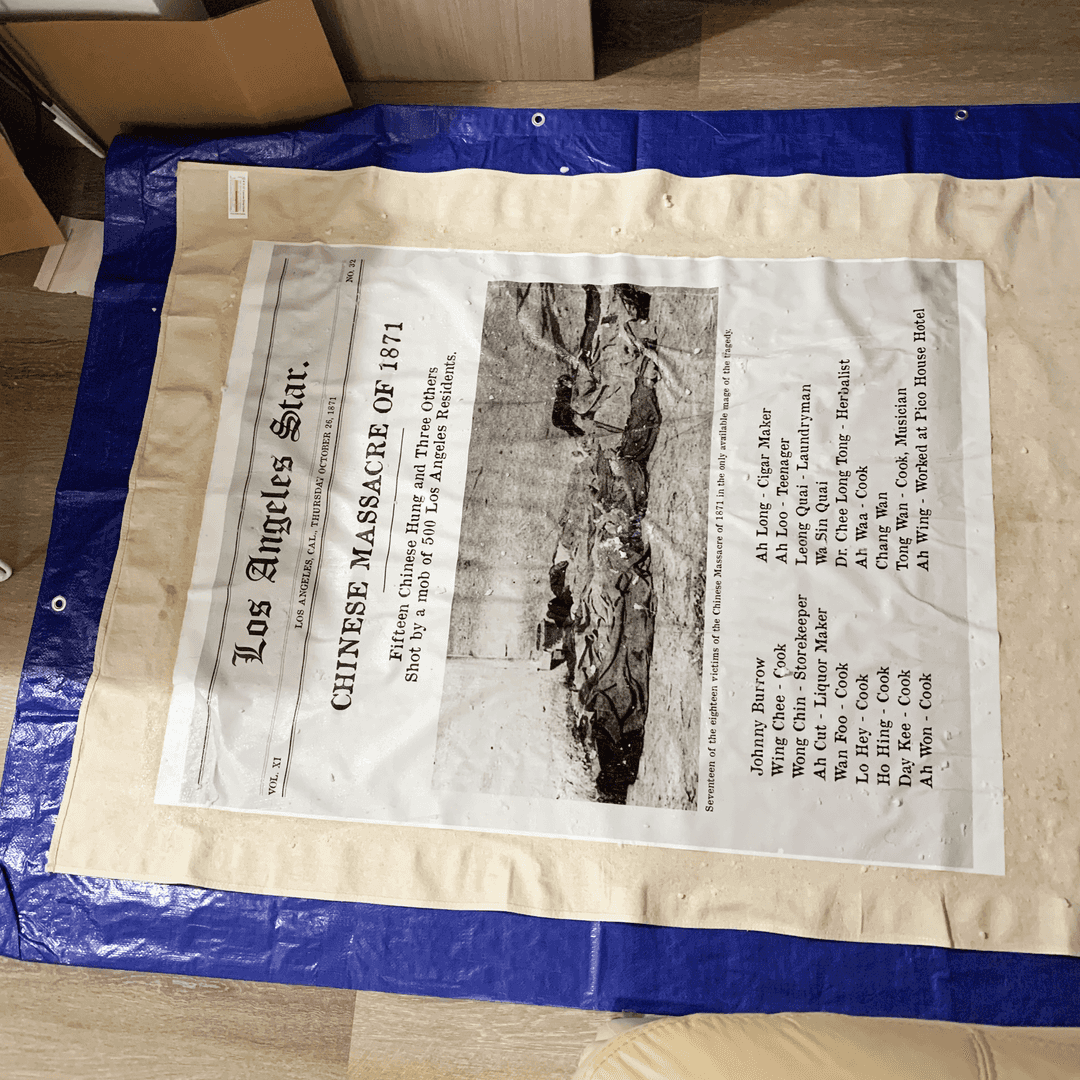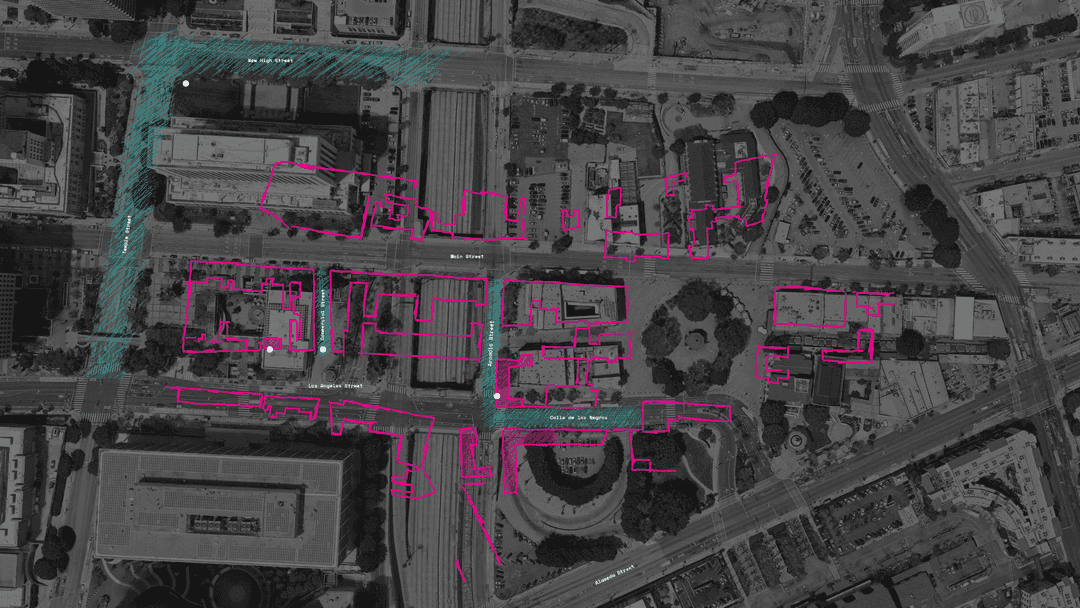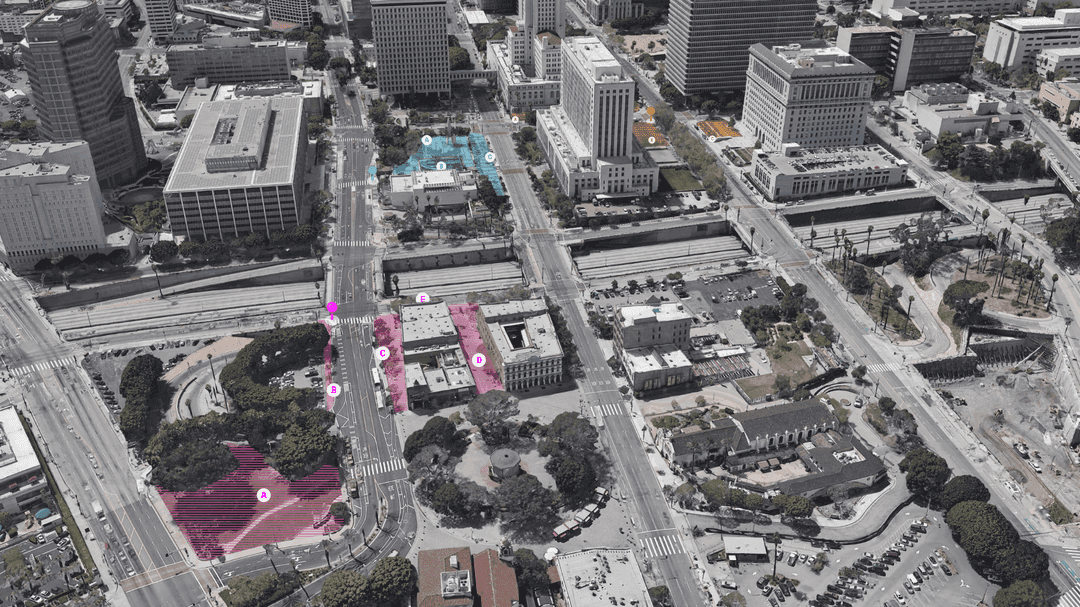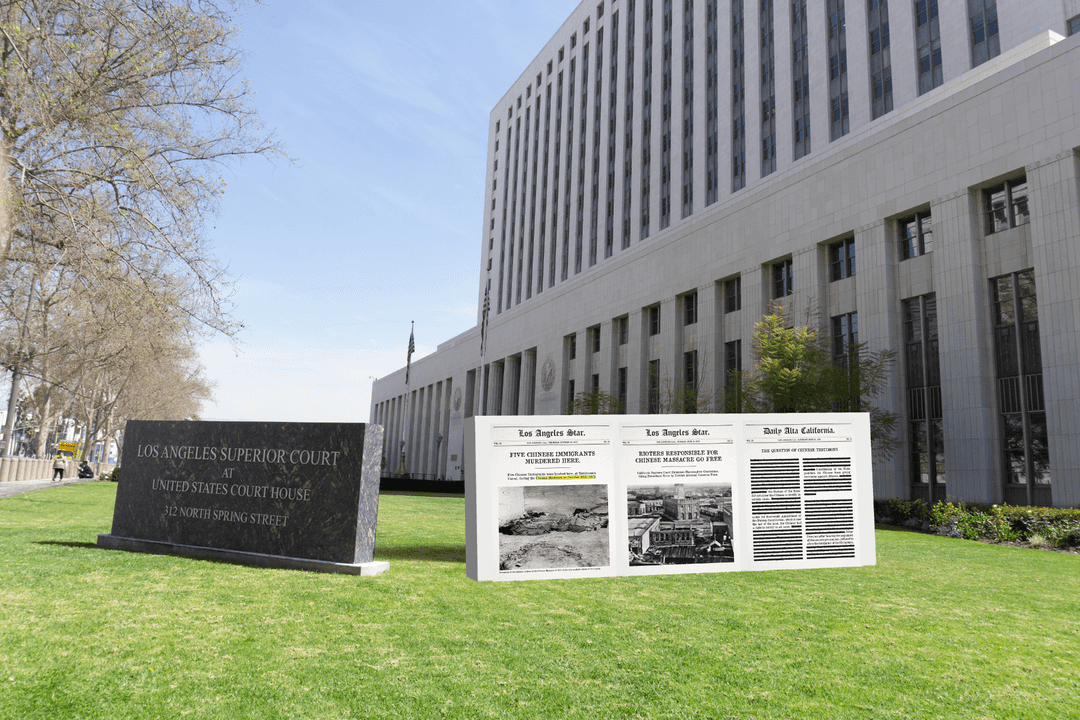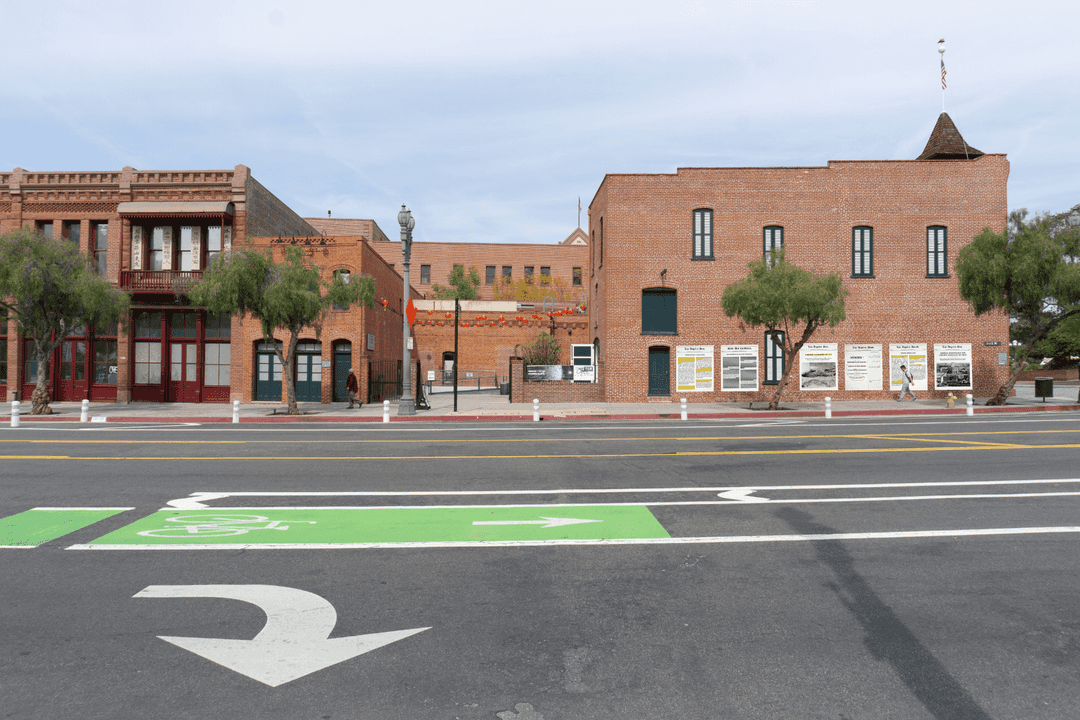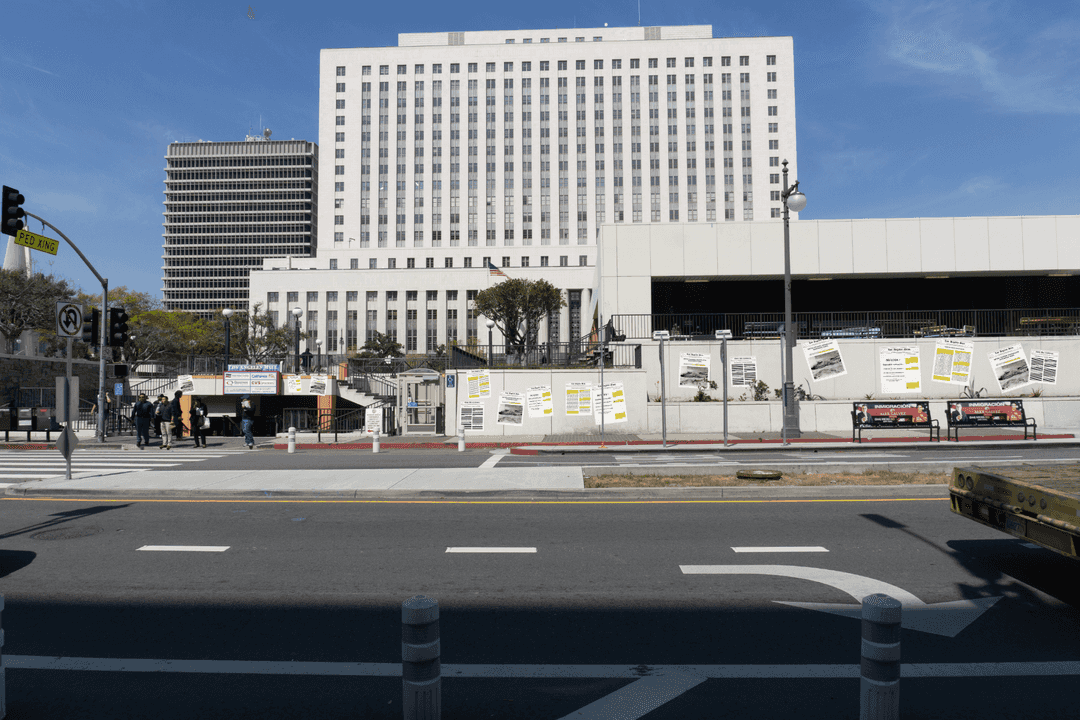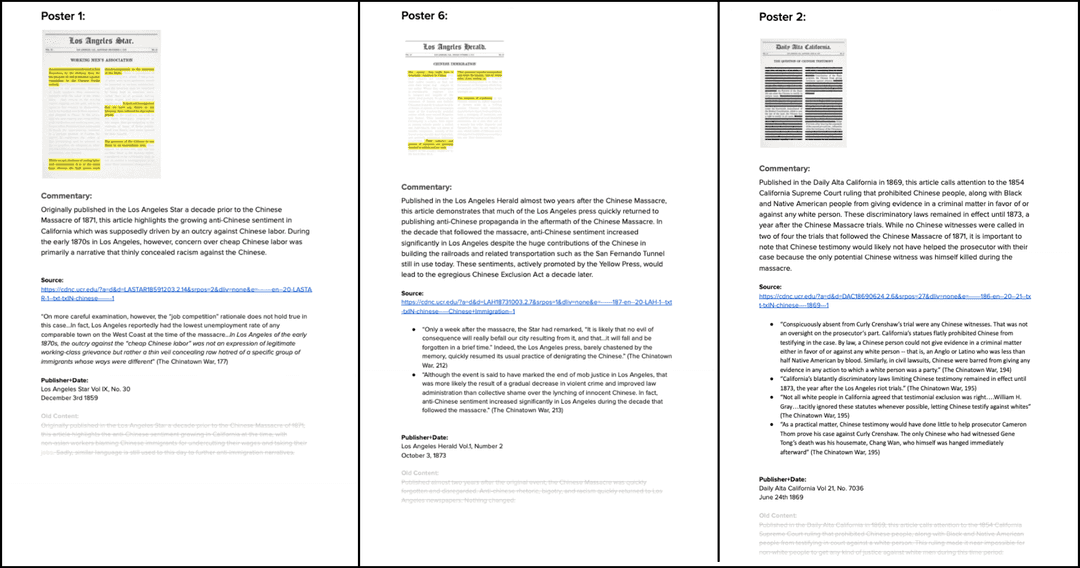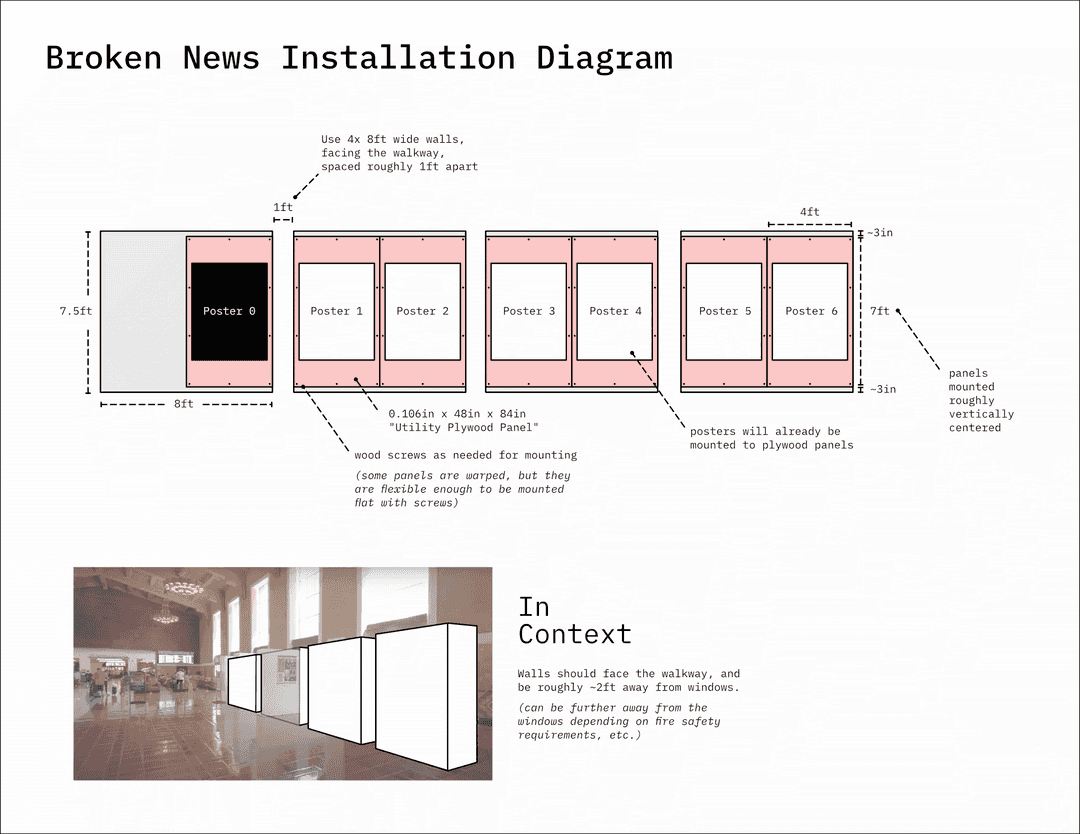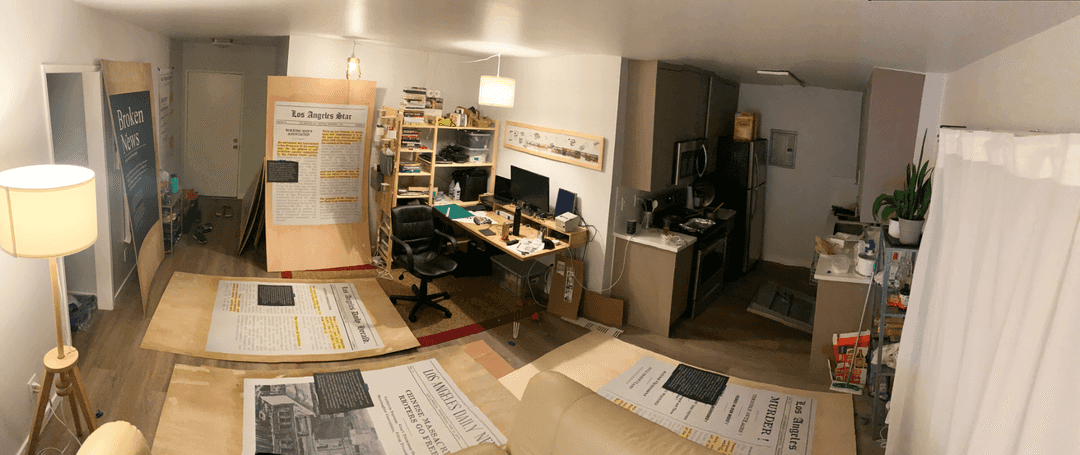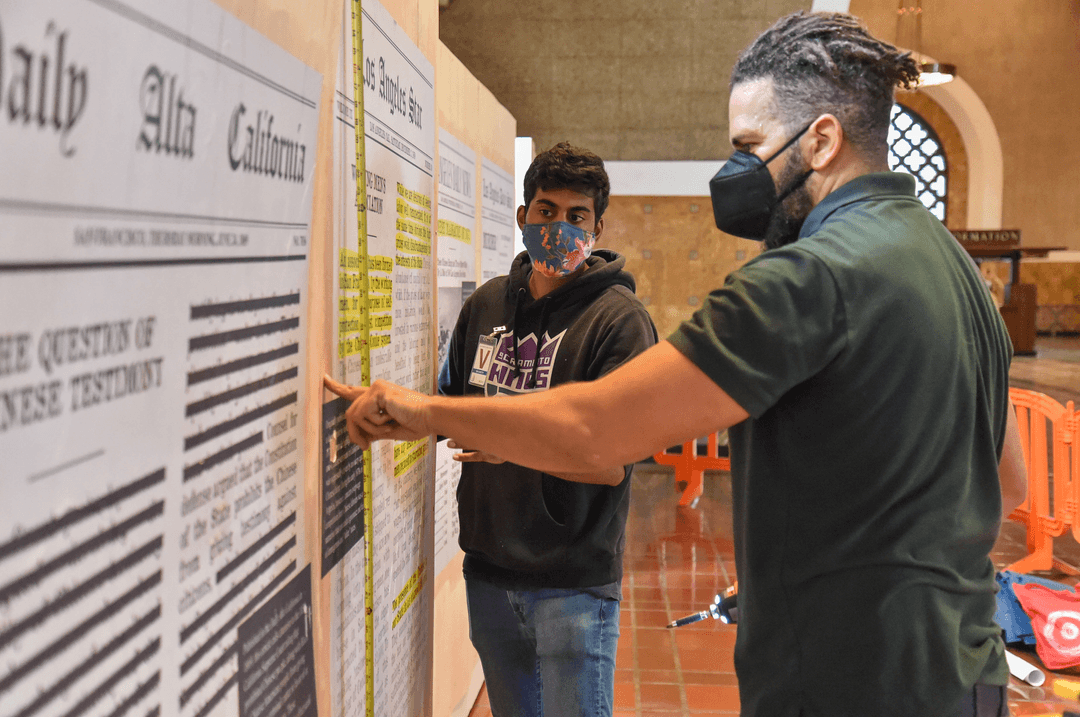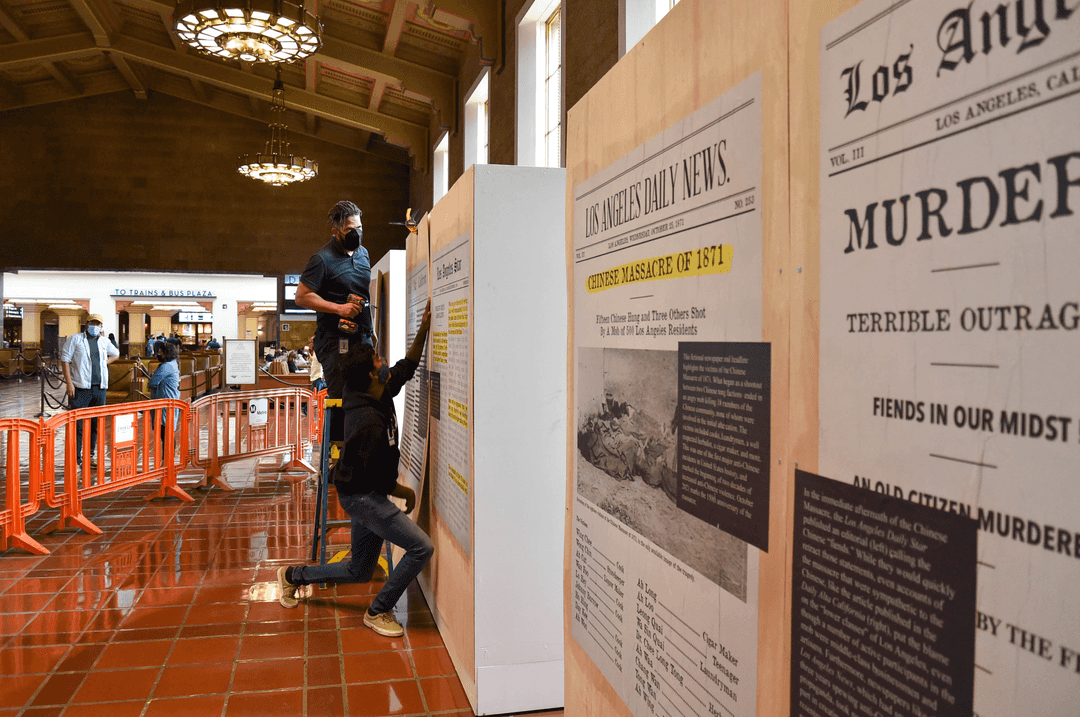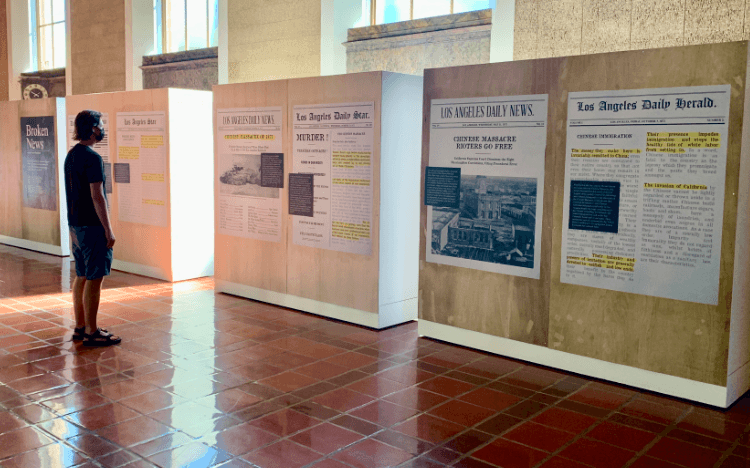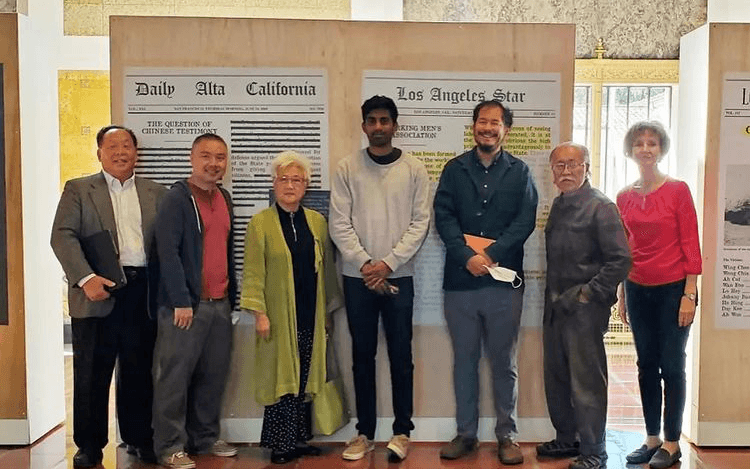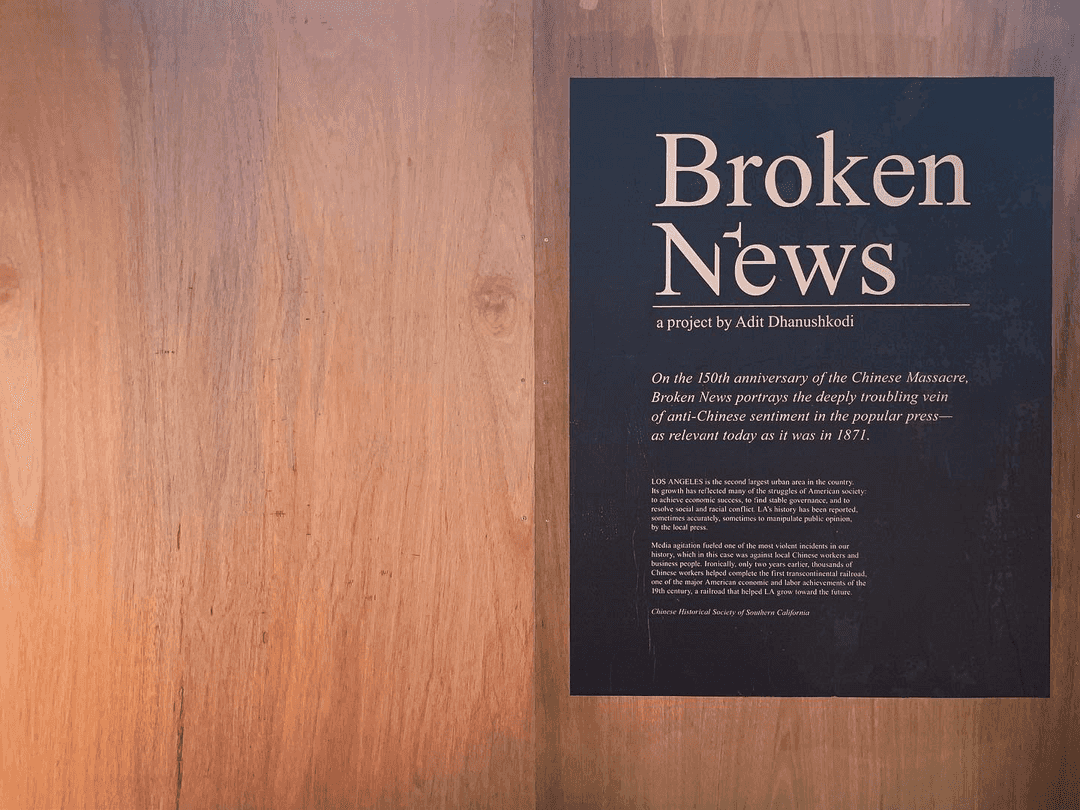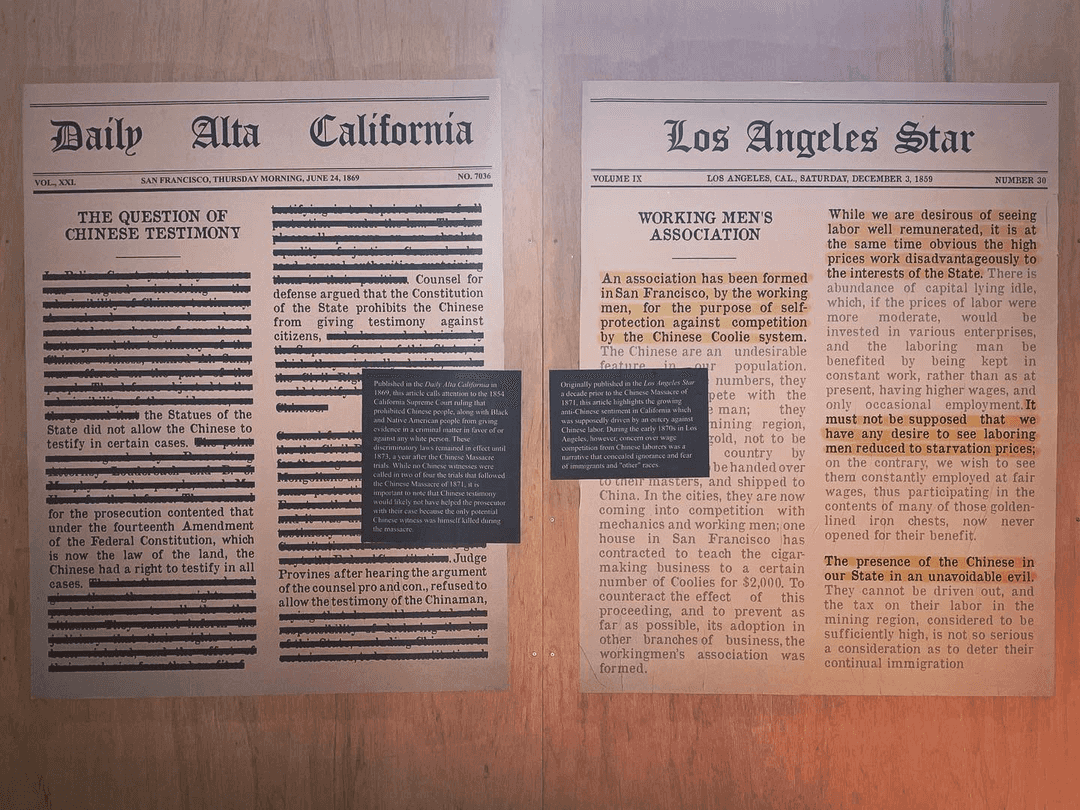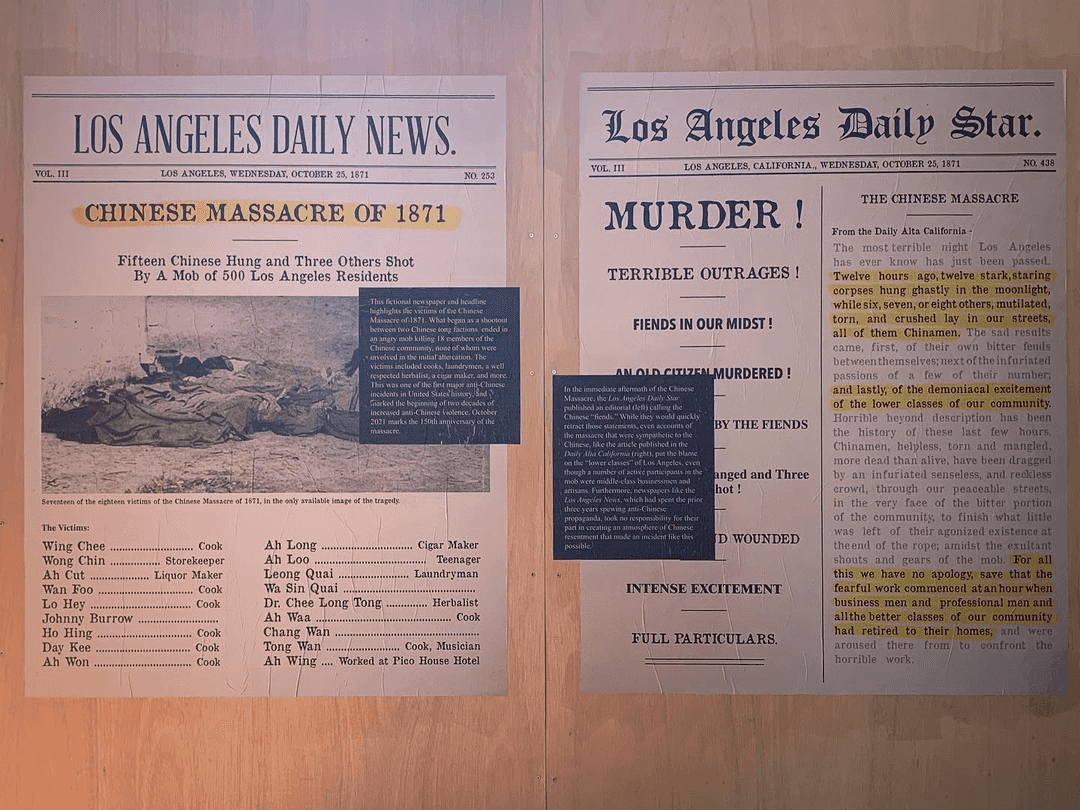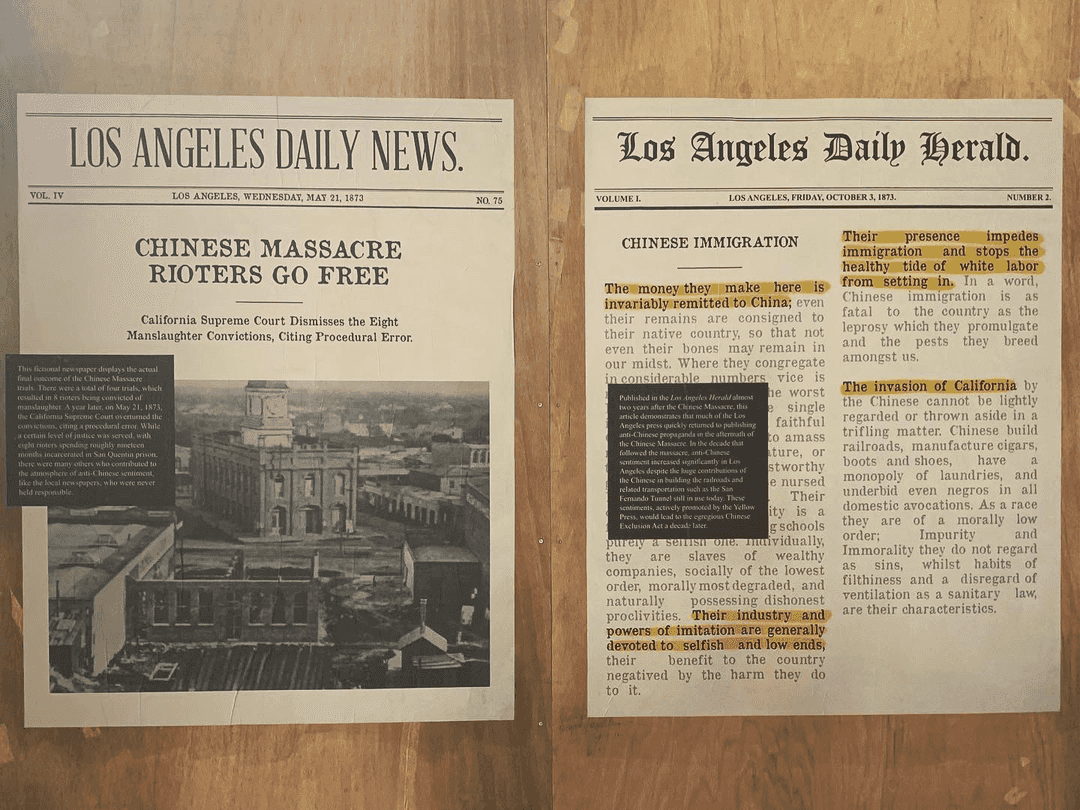On October 25th, 1871, eighteen members of the Chinese community were lynched by an angry mob in Los Angeles. The massacre was a result of a shootout between Chinese residents, which led to a mob attacking other members of the Chinese community, none of whom were involved in the initial altercation. The victims included cooks, laundrymen, a well respected herbalist, a cigar maker, and more. This marked the beginning of two decades of increased anti-Chinese violence. October 2021 marked the 150th anniversary of the massacre.
Brief: What would a memorial to this tragic event look like? How would you confront this violent history but be considerate and respectful of the victims at the same time?
Historical Research
I started with deep historical research. While this event isn’t well know in popular public memory, there was a surprising amount of detail recorded about the event.
Paul Farber from Monument Lab gave us a few pieces of advice for designing around tragic or distressing history that I found particularly useful:
- Don’t work the wound. Don’t find the pressure points and push on it.
- What’s the point of the memorial? Find an intersection between the present and past.
Based on the initial historical research, the thread I found most interesting and relevant to the present moment is the role of the newspaper media in the tragedy.
Primarily using UC Riverside's California Digital Newspaper Collection, I found the actual newspaper stories (above) that covered the Massacre at the time. This archive served as the foundation for the exhibit I designed.
Prototyping Exhibits
The next step was to start designing and prototyping an exhibit using the archive of newspapers I collected. The goal was to use the newspapers to both tell the story of the Massacre of 1871, and share a critical look at how the news media contributed the the environment which made a tragedy like this possible.
Content: Creating variations in newspapers, designed from the original articles. Testing out different display styles, and annotating the original articles to find most interesting passages to display.
Size and Locations: At the same time as I was prototyping the content, I was also trying to determine what size these posters would be, and where they might be put up. These decisons would also impact the design of the content.
Material Exploration: The third thread of prototyping was exploring how these posters could be mounted. I primarily imagined installing these posters with wheat paste, but I tested out different substrates to wheat paste onto, like canvas or plywood.
Identifying Potential Sites
To further refine the location selection, I mapped the original Los Angeles Chinatown onto what is now the Historic El Pueblo area in downtown Los Angeles. This mapping let me identify potential sites for an installation that would correspond with the specific details of the Massacre of 1871.
Once these sites were identified, I produced mockups of what an installation of these newspaper posters would look like.
Refining Exhibit with Community Partners
The mockups and designs above were packaged together as a proposal for a temporary monument. Once a few community partners expressed interest in exhibiting the piece in Union Station, I began to work with the community partners to refine the text and narratives in the exhibit to:
- Ensure it's historical accuracy
- Better incorporate the perspectives of the local community
- Give context to why the exhibit was being shown in Union Station
Through many discussions, we developed an improved set of "commentary" annotations that would appear with each poster.
Installation
For the final installation, I decided to wheat paste posters onto pieces of thin plywood, which would be screwed onto mobile walls provided by LA Metro.
Bottom two photos are courtesy of LA Metro (Los Angeles County Metropolitan Transportation Authority)
Final Exhibition
The final exhibit was shown for the month of October, which marked the 150th anniversary of the Chinese Massacre of 1871. Image on the right is courtesy of LA Metro (Los Angeles County Metropolitan Transportation Authority)

